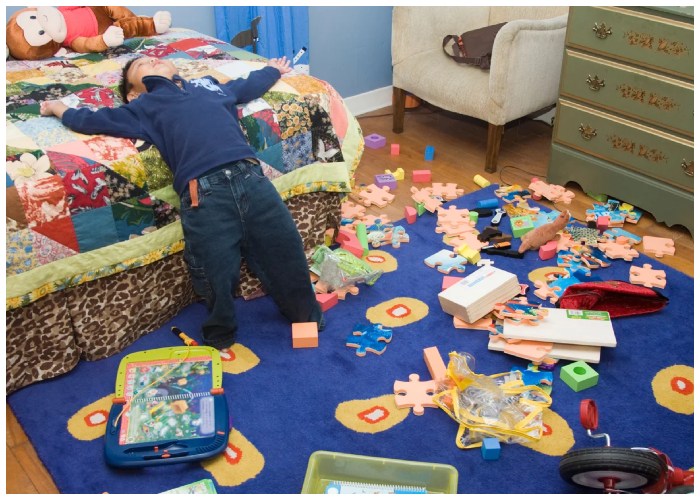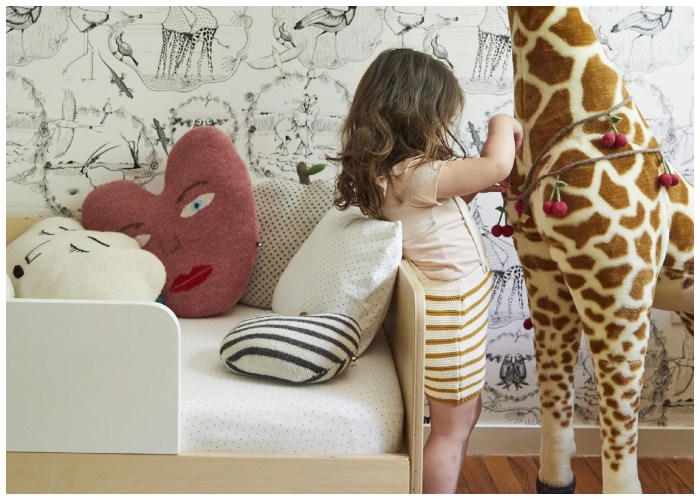Decorating a child’s room is a delicate balance of practicality, style, and—most importantly—survivability. While it’s tempting to design a Pinterest-perfect nursery or a themed wonderland, the reality is that kids will quickly introduce their own (often chaotic) touches. Stickers will be plastered on furniture, toys will multiply at an alarming rate, and their once-beloved décor will suddenly become “embarrassing” overnight. So, before you invest in that designer wallpaper or meticulously color-coordinate every piece of furniture, here are the biggest mistakes to avoid when designing a child’s room—and what to do instead.
1. Overlooking the Reality of Kid Clutter
Children’s rooms are not static spaces; they evolve with their ever-changing tastes and interests. While adults might appreciate a curated aesthetic, kids are natural hoarders. They collect everything from Lego sets and action figures to oddly shaped rocks and art projects they refuse to part with.
What to Do Instead:
- Accept that clutter is inevitable and design with storage in mind. Opt for multi-functional furniture like beds with built-in drawers or storage benches.
- Create designated “clutter zones.” A few open baskets or shelves dedicated to their treasures will give them a space to display their prized possessions without taking over the entire room.

2. Choosing Delicate or High-Maintenance Finishes
Fancy wallpaper, pristine white furniture, and delicate fabrics might look beautiful in theory, but in reality, children’s rooms endure heavy use. Sticky fingers, marker stains, and general wear and tear will quickly take their toll.
What to Do Instead:
- Invest in wipeable paint rather than wallpaper, or choose a durable finish that can withstand crayon incidents and accidental spills.
- Skip the expensive, delicate fabrics. Instead, opt for machine-washable bedding, rugs that can handle spills, and furniture that won’t show every smudge.
3. Creating a Space That’s Too Themed or Rigid
A perfectly curated “jungle” or “princess” room may look great now, but kids’ interests change fast. That dinosaur-themed room they adored at age six might become “so embarrassing” by age eight.
What to Do Instead:
- Keep major elements neutral—think classic furniture and versatile wall colors—so you can easily swap out accessories when their tastes evolve.
- Use removable décor like posters, wall decals, and themed bedding that can be switched up without major overhauls.
4. Ignoring Practical Sleep Considerations
A fun, playful room is great—but if the space isn’t conducive to sleep, you’ll regret it. A bed that doubles as a jungle gym or a room flooded with daylight at 5 AM will make bedtime a challenge.
What to Do Instead:
- Prioritize blackout curtains or solid shutters to block out light and ensure better sleep.
- Avoid overly stimulating furniture. A bed should feel like a cozy retreat, not an amusement park ride.
5. Forgetting That Kids Outgrow Everything (Fast)
That adorable toddler-sized bed may be perfect now, but before you know it, your child will be towering over their furniture and complaining about their toes hitting the end of the bed.
What to Do Instead:
- Think long-term. Choose a bed that can transition from childhood to teenage years, or invest in adaptable furniture that grows with them.
- Leave room for change. A space that works for a seven-year-old should still be functional for a teenager with minor tweaks.

6. Expecting Kids to Play in Their Rooms
Parents often dream of a well-organized playroom or bedroom where kids will happily entertain themselves. In reality? Kids want to be where you are. They’ll play on the kitchen floor, right outside the bathroom door, or in the living room rather than staying put in their beautifully designed play area.
What to Do Instead:
- If possible, keep play areas near communal spaces. Instead of a designated playroom tucked away upstairs, incorporate toy storage into your main living areas.
- Design their room for relaxation, not just play. A cozy reading nook or a soft rug for lounging makes the space feel inviting beyond just toys.
7. Underestimating the Importance of a “Treasure Shelf”
Every child has their collection of “special things”—whether it’s sports trophies, school art projects, or an assortment of completely random objects they refuse to part with. Instead of fighting this, embrace it.
What to Do Instead:
- Create a dedicated display area. A shelf or pinboard allows kids to showcase their treasures in an organized way.
- Let them take ownership. Giving kids control over a small section of their room fosters independence while preventing their collections from spreading everywhere.